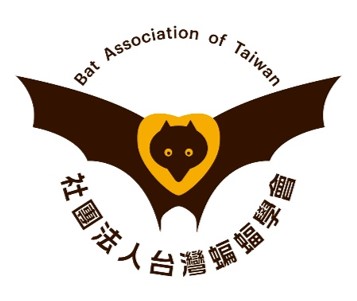蝙蝠研究
2014_台灣三種蝙蝠之出生後神經元新生_謝佳瞜
出版年份:2014
研究生:謝佳瞜
分類:碩士論文
題目:台灣三種蝙蝠之出生後神經元新生
Title:Postnatal Neurogenesis in Three Species of Bats in Taiwan
摘要:
在哺乳類動物大腦中終其一生都會有神經元新生。出生後的神經元新生發生在大腦的兩個區域,一為嗅球(OB)和另一為海馬迴的齒狀迴(DG)。位於側腦室旁的神經幹細胞會產生嗅球的神經元,而和齒狀迴內側的神經幹細胞則會產生齒狀迴神經元。新生的神經元要建立突觸連接,融入原有的神經迴路才會存活下來並且發揮它的功能。到目前為止,大部分出生後神經元新生的研究都集中在實驗室飼養的囓齒類動物,至於在野生動物大腦裡的出生後神經元新生並未完全闡明。蝙蝠是唯一會飛行且比囓齒類動物較為長壽的哺乳類動物。除此之外,蝙蝠是靠回聲定位系統辨別方向、辨認障礙物的大小材質以及捕抓獵物等。由於蝙蝠有特殊的空間辨識能力,加上台灣蝙蝠大腦內的出生後神經元新生到目前為止並沒有被研究過,因此本研究主要想探討台灣蝙蝠腦內的出生後神經元新生。我們使用胸苷類似物BrdU來標定新生的細胞和可以辨認與神經發育相關特定細胞群的抗體來研究台灣蝙蝠的出生後神經元新生的狀況。根據實驗結果,我們發現高頭蝠有與老鼠相似的嗅球神經元新生,但缺乏海馬迴神經元新生。而在摺翅蝠和葉鼻蝠則都有嗅球和海馬迴神經元新生。我們也使用了Sox2抗體標定在側腦室旁和齒狀迴內側的神經幹細胞。在這三種類的蝙蝠中都有神經幹細胞存在在這兩個腦區域。除此之外,我們也利用PSA-NCAM 和DCX抗體來標定神經母細胞。除了高頭蝠的齒狀迴之外,在側腦室旁和齒狀迴都可以偵測到神經母細胞的存在。另外,我們也使用了Ki67抗體標定在側腦室旁和齒狀迴正在細胞週期內的細胞。除了高頭蝠的齒狀迴以外,存在有神經幹細胞的腦區內都有發現正在進行細胞分裂的細胞。整體而言,蝙蝠的大腦神經元新生是一種種間特異的生理現象。
Abstract:
Postnatal neurogenesis occurs in mammals throughout life. Neural stem cells (NSCs) in the subventricular zone (SVZ) of the lateral ventricle and in the subgranular zone (SGZ) of the dentate gyrus (DG) give rise to new neurons in the olfactory bulb (OB) and DG, respectively. Newborn neurons can establish synaptic connections and integrate into the neural circuit. Most of the studies focus on molecular mechanisms of postnatal neurogenesis in captive animals, especially lab rodents. However, whether it also persists in wild mammals is not fully elucidated. Bats, the long-lived flying mammals, can use echolocation to navigate. The pattern of postnatal neurogenesis in various bat species in Taiwan has never been reported. We used the thymidine analog, bromodeoxyuridine (BrdU), and cell type-specific markers to study postnatal neurogenesis in bats in Taiwan. We found that postnatal neurogenesis persisted in the OB of Chestnut bats (Scotophilus kuhliias). However, postnatal hippocampal neurogenesis was completely absent in these bats. Postnatal neurogenesis in the OB and DG was found in Japanese long-winged bats (Miniopterus schreibersii fuliginosus) and Formosan leaf-nosed bats (Hipposideros armiger terasensis). Sox2+ NSCs were present in the SVZ and SGZ of these three species of bats. Furthermore, there were neuroblasts present in the SVZ and SGZ of these three species of bats except in the SGZ of Chestnut bats. Lastly, we found that proliferative precursor cells existed in the SVZ-OB pathway in these three species of bats. In the SGZ, proliferative precursor cells were only found in Japanese long-winged bats and Formosan leaf-nosed bats, but absent in Chestnut bats. Overall, there is species-specific pattern of postnatal neurogenesis in these species of bats.
